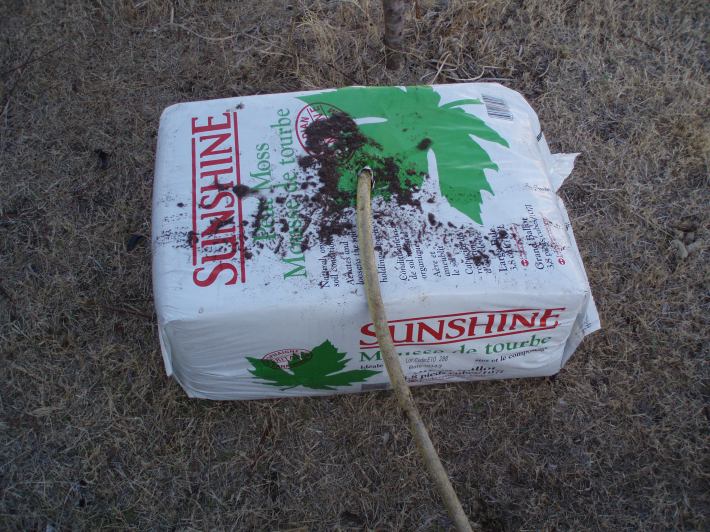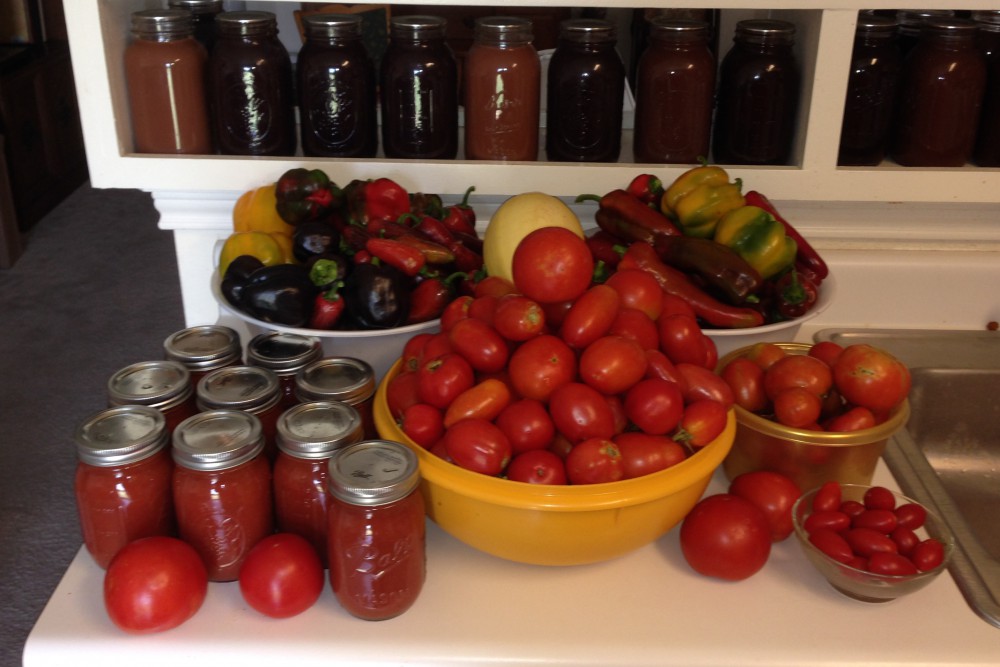Square-Foot Gardening made easy
Materials: First step in square foot gardening: Build the box. You can use almost any type of material. I have used brick, stone, and lumber constructing my raised beds and square foot gardening beds. I prefer and recommend using 2 x 6 western cedar boards as they are rot resistant and resistant to bug damage. The following image is of a 2’x2′ box made of 5″ wide cedar picket fence boards. This is a good starter box if you are not sure that this is the way you want to garden. Cedar pickets are relatively inexpensive and again tend to be more rot resistant than pine boards. In the past I avoided treated lumber because of the arsenic that they used in the treatment process that could potentially leach into the soil. Recently I read several articles that Yellow Wood and other treated lumbers are safe to use for vegetable raised bed gardens as they use copper to treat the lumber, not arsenic. Still, you might want to seal the inside of the box with Latex paint. Note that residents of the City of Austin Residents looking to save money can get FREE re-blended flat latex paint in 5 gallon containers from Austin Resource Recovery.
How to Build the Boxes: Measure and cut your boards so that the inside dimensions for your box are evenly divided foot lengths; for example using to build a 2 foot box using 2’x6’ cedar lumber I cut my lumber in 2’1.5” lengths. I cut the four boards all the same length and assemble them lapping them one end over the other all the way around. This way the inside dimension of the box will be 2’x2′ sq ft. I always pre-drill all my screw holes to avoid the lumber from checking. I use dacrotized deck screws when assembling my boxes. Once I had my materials collected this box took me about 15 minutes to cut and build.
Soil Mix for Raised Bed Gardening: The traditional Square Foot Gardening (SFG) mix is 1 part compost, 1 part peat-moss, 1 part vermiculite. I find that the traditional SFG mix does not do as well for Central Texas gardening and climates. The traditional SFG mix requires intensive watering in Central Texas as it does not hold moisture in the direct sun and extreme heat we have. I find I overcome this problem when I add 1 part soil to the mix. The SFG soil mix formula I highly recommend using is ¼ of each of the following components: compost, organic soil, peat moss, and vermiculite. I am partial to the Lady Bug brand of garden soil; it has won many awards and is highly rated and chock full of nutrients. I like to use Cotton Burr Compost because of the good water retention properties it has which helps the soil retain moisture. I prefer vermiculite over per-lite. NOTE: Stay away from the bargain $1-$2 bags of soil. They are full of sand. I used these in the beginning and my soil became like concrete instead of the light fluffy mix it stays when I use a higher grade organic soil.
How to Figure Soil Volume for Raised Beds:The following is the formula that to use when calculating how many square feet of product you will need:
Volume = length x width x depth
Divide Volume by 324 = cubic yards
Multiply cubic yards by .27 = cubic feet needed to fill box
Notes on Peat Moss: Peat moss is very powdery and will blow everywhere when you try to mix it into the Square Foot Garden Soil Mix….Unless you wet it down. I do this by punching a hole in the peat moss bale and inserting the garden hose. I let the bail fill up with water and then let it sit for about an hour before I go to make my SFG soil mixture.
Notes on Cardboard and Filling the Boxes: The first raised beds I installed, I scraped the site, put my box down, filled it up, and planted my garden. To my dismay I had a profusion of weeds come up from the soil below my beds. What to do…What to do? The next growing season I took some heavy cardboard boxes (plain, not painted of covered with the plastic coating that many come with nowadays). I dug out my beds, picked the frame up, laid the cardboard boxes down and laid the frame down on top of the card board boxes, and filled my boxes up again. Walla! No more weeds (except what the birds or winds blew in which were much easier to manage). Using card board provided a barrier for the weeds reaching the sun and in two growing seasons the cardboard had biodegraded.
Fill the SFG box with the SFG soil mixture components…and this is where I have the most fun…using my hands I reach in and begin mixing the SFG soil ingredients as if I were making a big tossed salad until I have an even distribution of all the soil components through-out the mix.
Here is the finished product. The dimensions of this box is 3’x4′. From start to finish this took me 2 hours to complete going through all the steps outlined in this primer.
PLANTING YOUR SQUARE-FOOT GARDEN: There are several good resources/links for Central Texas Gardeners. Check your local garden centers or Extension Office for areas outside of Central Texas. If you go to a local Nursery/Garden Center you will be able to talk to knowledgeable specialists on what will grow best in your area. Generally, box stores have a one size fits all approach so they will likely carry the same plants in California as they do in Maine.
- Square Foot Garden: http://www.squarefootgardening.com
- Monthly To Do Lists: http://www.naturalgardeneraustin.com/information/index.html
- Planting Calendar: http://aggie-horticulture.tamu.edu/travis/docs/vegetablePlantingCalendar2010.pdf
- Another Planting Calendar: http://www.co.travis.tx.us/agext/garden/planting/janmar.asp
SPACING YOUR PLANTS IN A SQUARE-FOOT GARDEN: Plant spacing is the distance apart you plant several of the same plant. In square foot gardens, that can be expressed as #/sqft (how many plants per square foot) or simply by inches in each direction. For instance, carrots are planted 16 carrots per sq.ft or 3″ apart. There are exceptions for certain vines or large plants that do not fit into individual square feet. The following is a list of some of the spacing I found to work best for some of the more popular/common plants you might find in a kitchen garden:


